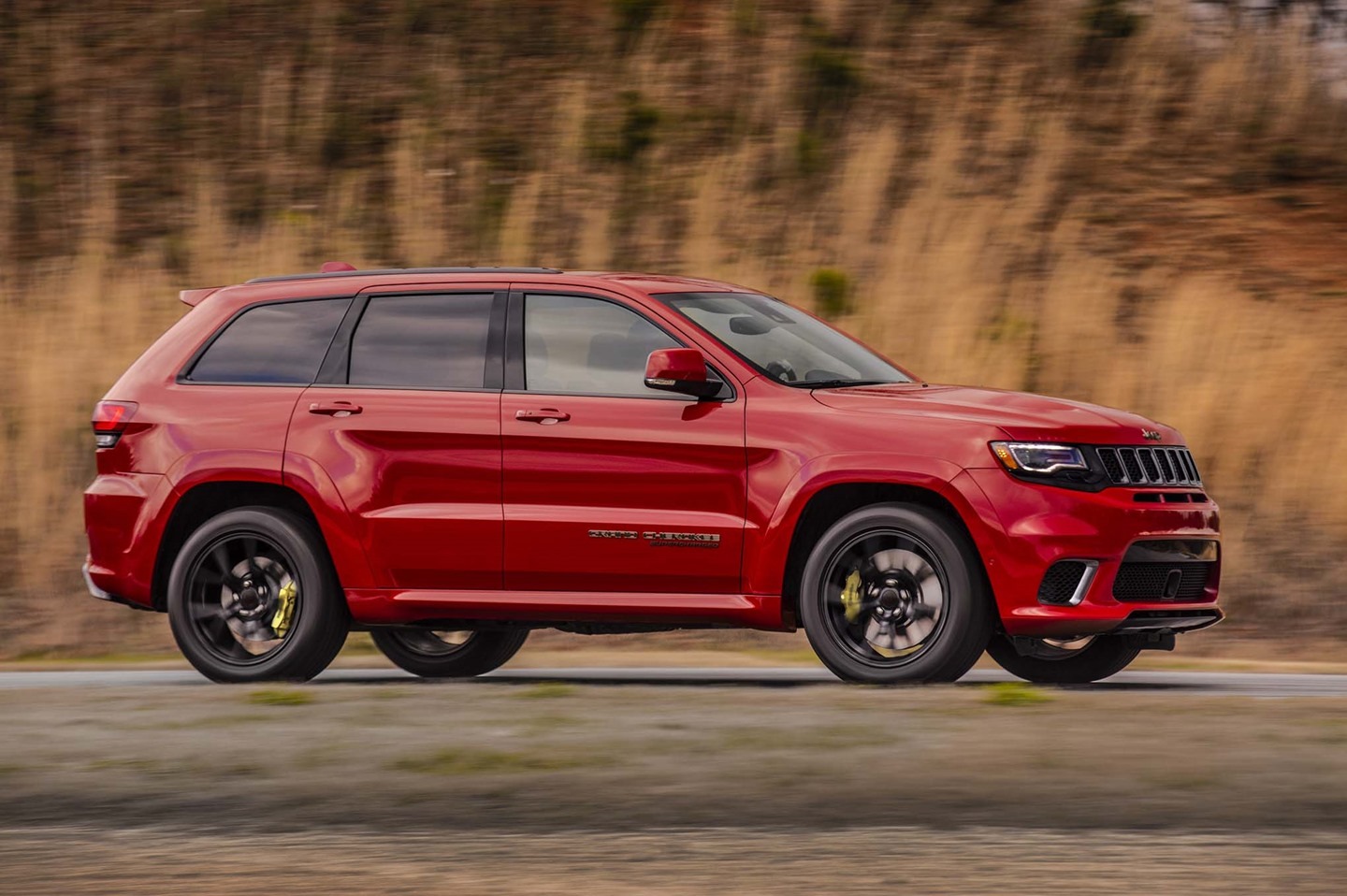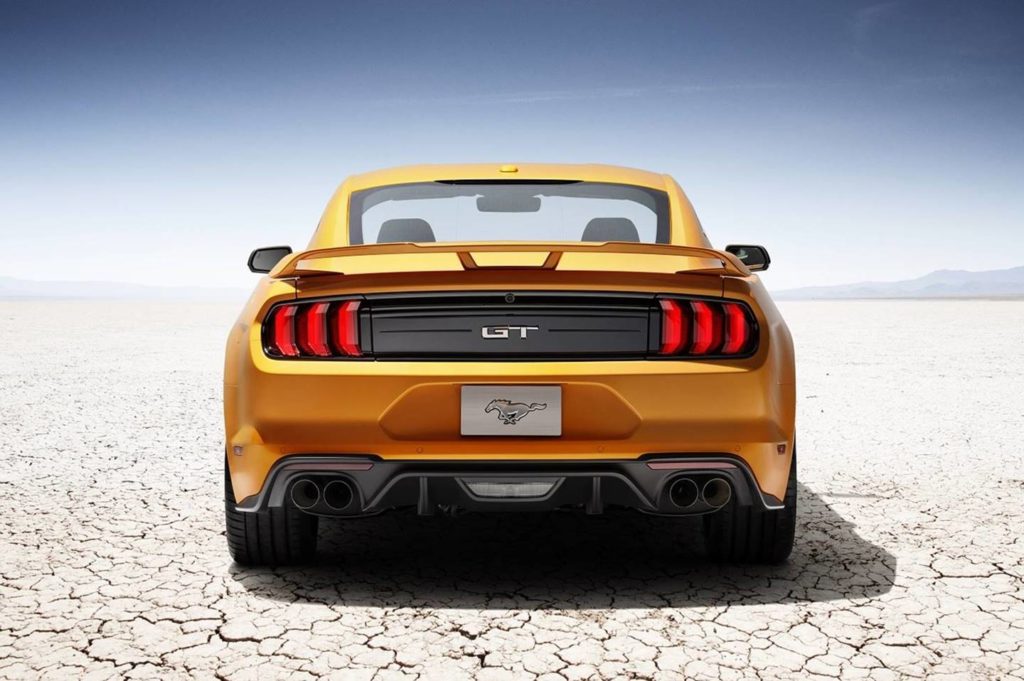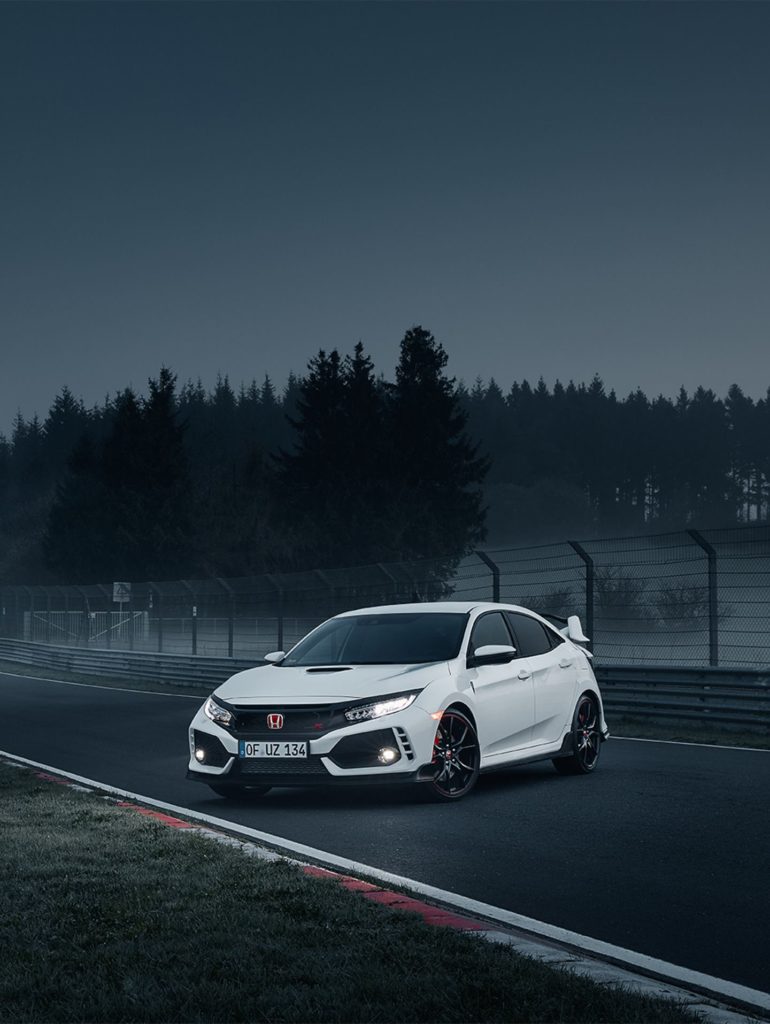
Overall Rating: 
“We are still dealing with physics here. I just want you to remember that.” So says Erich Heuschele, manager of SRT vehicle dynamics, to the 20 or so writers he’s about to turn loose on a racetrack in the Jeep Grand Cherokee Trackhawk. We’re dealing with physics, sure, but also an earnest effort to defy them with equal parts horsepower and lunacy. Say “707-horsepower Jeep” to anyone who hasn’t been paying attention and they just wiggle a finger into an ear and squint at you. “Huh?”
HIGHS
The world champion of indiscriminate throttle application.
LOWS
Above $80K, the “why not get a ?” question becomes harder to answer.
That same phrase, the one with the big number lashed to that old army word, carries the mystical power to convince even the most jaded auto writers to back away from the lobster roll and don a balaclava. We did drive the maximum Jeep on public roads, but it says “track” right there in the name, so we also hit Club Motorsports, a New Hampshire club track so new that crews were still installing Armco barriers the week before we showed up. It’s a 2.5-mile StairMaster that works its way up and down 250 feet of elevation change at a maximum 14 percent grade. Keeping his new Trackhawks from bending that fresh Armco is something about which Heuschele cares deeply.
The topography, on the other hand—nobody’s too worried about that. Few things flatten the hills quite like this much horsepower. Insane as it may be, the 707-hp Hellcat engine should at least be familiar by now. Down 251 cubic centimeters compared with Mopar’s naturally aspirated SRT engine, it’s a 6.2-liter V-8 capped with a 2.4-liter IHI supercharger, which stuffs those eight cylinders with 11.6 psi of boost. In the Trackhawk, it makes its full complement of horsepower but loses five pound-feet of torque—to 645—due to a more restrictive exhaust system.







